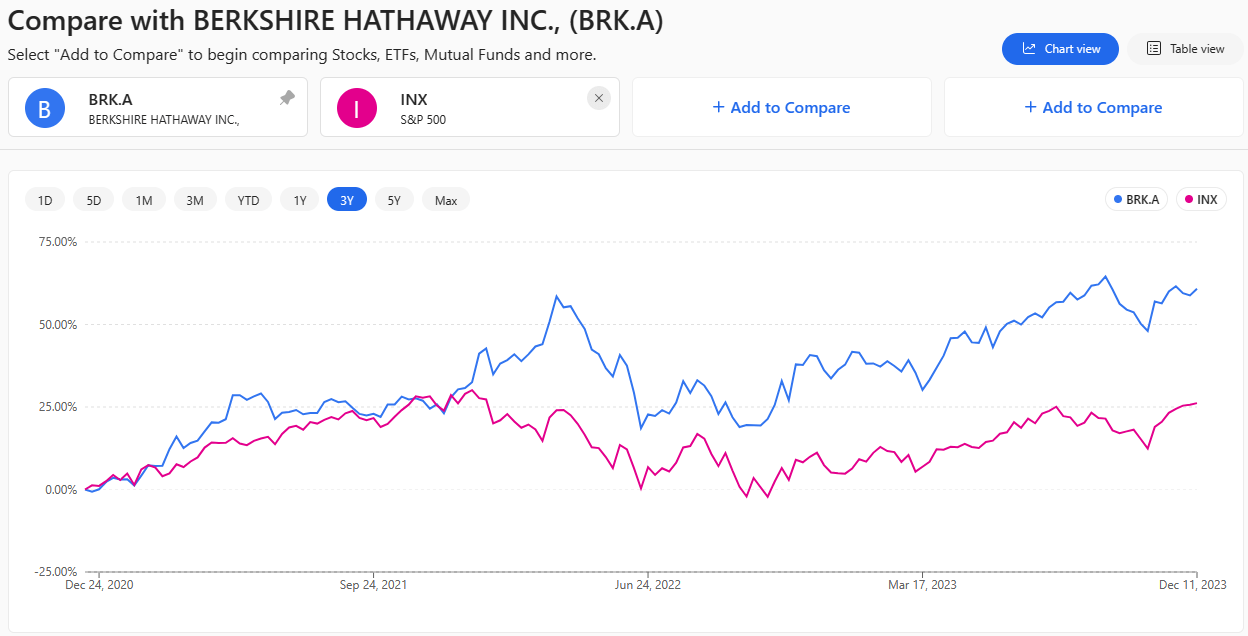Warren Buffet Leadership Style: 5 Cases You Can Apply Buffett’s Style
Buffett is shown as the best investor of the 20th and 21st centuries with a net worth of over $120 billion. Warren Buffett leadership style has helped him to start from selling chewing gum, Coca-Cola, and weekly magazines door to door and become the seventh richest person in the world and the best-known investor in the world. He is one of the 12 great leaders who changed our lives in the last 25 years. We have explored Warren Buffett’s leadership approach, five cases you can apply, benefits, and flaws in this article.
In this article
📌 Hint: Do not skip this article, you will find FREE Leadership Training resources throughout the article.
Why is Warren Buffet an Important Leadership Figure?
Warren Edward Buffett was born in 1930, in Omaha, Nebraska. His father was Congressman Howard Buffett. What makes Warren Buffet an important leadership figure is his excellence and a proven track of successful investments over 70 years. Warren Buffet leadership style is analyzed, studied, and practiced by many entrepreneurs and investors around the world.
Buffett started to be an entrepreneur or solopreneur, as early as he was 7 years old. One of the first books he read was “1,000 Ways to Make $1,000”. In his first entrepreneurial attempt, he sold chewing gum, Coca-Cola, and magazines door to door. Later, in high school, he made money by delivering newspapers and selling golf balls and stamps. Buffet and one of his friends bought a pinball machine for $25 and placed it in a local barbershop. Clients waiting their turn in the barber shops played on this machine and this successful venture turned into several pinball machines in several barbershops over months. Buffett’s first exit was this business, and they sold it for $1,200.
Today, Buffett is best known for his tremendous success in the stock market. Warren Buffet was inspired by phenomenal investor Benjamin Graham. The following figure proves the success of Warren Buffett leadership style as his company, Berkshire Hathaway, beats the S&P 500 returns in the last 5 years.

Buffet started to be interested in the stock market as early as he was a schoolboy. He was spending his leisure time in the customers’ lounge of a regional stock brokerage near his father’s office. His father saw Buffett’s interest in the stocks and brought him to the New York Stock Exchange when he was 10. Buffett bought his first stocks when he was 11. He bought six shares of Cities Service Preferred company stock, three for himself, and three for her sister.
Warren Buffet leadership style helped him to grow his stock-picking skills, finding businesses that will grow in the future and grow his wealth over time. Now, let’s go through Buffet’s leadership style, where you can apply his style, benefits, and flaws.
Enhance Your Leadership Skills – Executive Leadership Training Program
San Francisco Business School offers an online, self-paced comprehensive executive leadership training program. You can consider enrolling in this program to improve your leadership skills.
Warren Buffett Leadership Style: Laissez-Faire Leadership
Warren Buffett leadership style shows the common traits of laissez-faire leadership. The term “laissez-faire” is French for “leave it be” and it exactly fits with the style of leadership. The laissez-faire leadership style was first coined by Kurt Lewin in the 1930s.
Laissez-faire (Delegative) leaders do not step in; they create the environment for maximum participation, and let the people make many of the decisions. This leadership style works when there are competent resources in the team, people are motivated and require minimum supervision.
Delegative or laissez-faire leadership is a very hands-off management approach. When you use this style, you allow team members to set their own goals and deadlines, and you let them determine how to do their work. It requires the team leadership to be hands-off as much as possible and let the team perform independently. In laissez-faire management or leadership style, the leader gives freedom to the team and only helps them if the team needs it.
In an annual report from Berkshire Hathaway in 2010, Warren Buffett said:
“We allow our subsidiary companies to operate independently without supervision because it allows many of our managers to keep an owner-oriented behavior, and they use them well in motivating their team members to perform well.”
This laissez-faire leadership approach has allowed Berkshire Hathaway to become one of the world’s largest and most successful investing companies.
💡 Read 15 Types of Leadership article to learn about other leadership styles.
Laissez-Faire Leadership vs Micromanagement
We’ve gone through the cases when you can apply laissez-faire leadership, benefits, and flaws. The opposite side of the laissez-faire management style is micromanagement. We have a 9-minute Laissez-faire vs micromanagement video on YouTube.
5 Cases to Use Warren Buffett Leadership Style: Laissez-Faire
Laissez faire managers are delegation masters. They leave it up to their teams to find their way through projects and tasks and give a minimum amount of supervision. Employees often have a lot of power to make decisions with a laissez-faire approach. In fact, at the extreme end of laissez-faire, the manager can seem to be completely absent! You need extraordinary leadership skills to apply this style.
If you apply Warren Buffett leadership style, you can boost the motivation and performance of your team, however, you cannot apply this management approach in all cases. Let’s go through the 5 cases when you can apply a laissez-faire leadership style.
1- Competent and Motivated Team
Delegative leadership is most effective when team members are highly motivated and highly skilled, and when you can provide frequent feedback on performance and progress. To set goals and deadlines and then leave the team to do the rest of the work, you need competent and motivated resources. You cannot leave junior or inexperienced resources on their own because they need guidance and coaching on how to perform the work. Warren Buffett is meticulous in hiring top-notch talents for his company.
Just competence is not enough to apply Warren Buffet leadership style. Team resources must be motivated as well. Only senior, experienced, and motivated team members can work toward a deadline and draw their own roadmap to success.
A laissez-faire leadership style is also effective when you work with freelancers or consultants.
2- Creativity Requiring Works
Creativity and innovation require freedom. It is less likely to expect creative ideas, new perspectives, or innovative thinking to occur under autocratic leadership where there is minimum participation.
Warren Buffett leadership style fosters creativity as it requires maximum group collaboration and participation. The group finds its own ways, methods, and path to reach its goals. When doing this, team members participate in group meetings and discussions, and this leads to new ideas, creative solutions, and out-of-the-box thinking as a result.
Therefore, if creativity is required in your work, you can apply laissez-faire leadership. Some of the works that require creativity can be:
- New product development
- Artwork creation
- Research and development projects
- Marketing projects
You can enhance this list.
Free Online Leadership Skills Training Program
One of the requirements to be a good leader is to improve yourself continuously. The best way to do this is, to enhance your competence through training. Take a step ahead and jumpstart your leadership competence. Enroll in our 1-hour Free Leadership Training program.
3- Warren Buffett Leadership Style As a New Leader
If you’re a new leader and you need to build rapport with your team, you can use the Warren Buffett leadership style. There are some risks to this approach as well. Because you do not know the team yet. Who is motivated, who is not, who is experienced, who is competent, who has expert power in the team, etc. In some cases, years of experience do not give a clue about the competence of a resource. As a new leader, you need to spend time with your new team to grasp the details about the resources in your team.
Warren Buffett leadership style is a great approach if you have just been assigned as a new team leader. You can set deadlines and goals for the team. However, you must be closely watching your team to understand each one’s capacity, influence, and skills. The more you spend time with the team, the more insights you will have about your team.
Applying autocratic leadership or a hands-on approach to a new team you are leading can harm your relationship. Because a hands-on or micromanagement style is easily perceived as cold and impersonal. You would not want this to happen in the early days of your leadership.
Make sure you have enough flexibility to apply laissez-faire leadership when you are a new leader. You should be tolerant of mistakes, errors, delays, and frequent conflicts until you get to know your team.
4- Flexible Deadlines
Freedom and democracy require evaluation of the options, participation of the group, and making a decision, consensus if possible. This requires time. You need to give time to your team to discuss solutions, create new ideas, test new methods, and perform their work. While waiting for the best outputs, you have to be patient.
Therefore, if you have flexible deadlines, you can apply the Warren Buffett leadership style. This does not mean that deadlines are not important for this leadership style. However, you must be tolerant of delays if the team cannot find a good solution yet.
5- Team Has A Success Track Record
Even if the team looks competent and motivated, that may not be enough to apply laissez-faire leadership. You need to be sure that the team is successful in managing themselves toward reaching its goals. Look at the track record of the team. You can ask yourself the following questions:
- How many of the team members have been working for the team for a long time?
- Did they complete similar projects before?
- What is the success project completion ratio of the team?
If you are a new leader or new to the organization, you can check the repository of the organization and ask other leaders for their opinions as well.
3 Benefits of Warren Buffett Leadership Style
While there are several benefits of applying Warren Buffett leadership style, we will list the top 3 benefits here.
1- Fosters Creativity and Innovation
As the team feels freer, they will be more motivated to think about new ideas and this will foster creativity and innovation. If the team is just getting used to each other, you should be patient for the team to get to know each other. As a laissez-faire leader, you need to be with your team only when they need it. You have to provide the tools and resources they need to be more creative and innovative.
2- Warren Buffett Leadership Style Improves Team Building
Teams that have laissez-faire leaders are the teams that have maximum participation. They discuss different ideas, perspectives, and opinions coming from the different members of the team. The more they discuss and participate, the more they know each other.
When the team reaches its goals, they feel that “they built the road to success”. Respectively, team building is ensured. Over time, strong bonds among the team are established.
3- Leaves Room for the Leader to Focus Only When Needed
Warren Buffett leadership style requires the leader to be with the team, only when needed. So, the team leadership can focus on other important tasks rather than day-to-day management of the team’s tasks. This will increase the productivity of the leader as they will step into the issues only if the team asks for their leader’s help.
3 Flaws of Warren Buffet Leadership Style
Everything has a trade-off, and the Warren Buffett leadership style as well. We will list the top three flaws here.
1- Delays
Warren Buffett leadership style requires the ultimate freedom of the team. The team evaluates, assesses, discusses, and reaches a conclusion on its own. However, this requires a significant amount of time. Sometimes, the team may need to discuss for hours even days for a solution.
Therefore, Warren Buffett leadership style may cause delays in projects. If the organization’s culture is ready to sacrifice time for innovation and creativity, this leadership style can be used.
2- Inexperienced Teams Can Underperform under the Warren Buffett Leadership Style
If the team is inexperienced and requires coaching and guidance, the Warren Buffett leadership style can cause demotivation and underperformance.
Typically, junior team members require mentoring, coaching, training, and guidance from more senior members or their leaders. If this is absent in the team, there is more room for mistakes, delays, and undesired outcomes. So, if you apply this leadership style in an inexperienced team, failures will cause demotivation of the team and result in underperformance respectively.
3- Underestimation of the “Leader” Image
In an ideal scenario, a laissez-faire leader is absent after setting the goals and deadlines for the team. The team works on its own to reach targets. This situation may question the existence of the leader.
However, Warren Buffett leadership style does not mean that the leader is absent. The leader should be there whenever the team needs support. In a perfect scenario, if the team does not need support, the existence of the leader may be questioned by the team or even by the organization.
Watch Laura’s 30 Seconds Experience – Executive Leadership Program
Hear from Our Alumni Laura Smith, Head of Design. Laura attended the Executive Leadership Program at SFBS.
Summary
Warren Buffett leadership style is analyzed, discussed, and applied by several leaders, investors, and professionals as Buffett is the phenomenal investor and businessman of our time. Buffett’s leadership style is mostly considered laissez-faire where the leaders create the environment for their team and let them perform the tasks with minimum supervision.
Warren Buffett leadership style works best in five cases. These are when the team is motivated and competent, if the work requires creativity and innovation if you are a new leader to the team or organization if there are flexible deadlines, and if the team has a proven record of success.
The three benefits of the Warren Buffett leadership style are fostering innovation and creativity, improving team building, and leader presence only when needed. The top three flaws of Buffett’s leadership style are that the team operates under freedom, there can be delays, inexperienced teams can underperform and the leader’s image can be underestimated.

